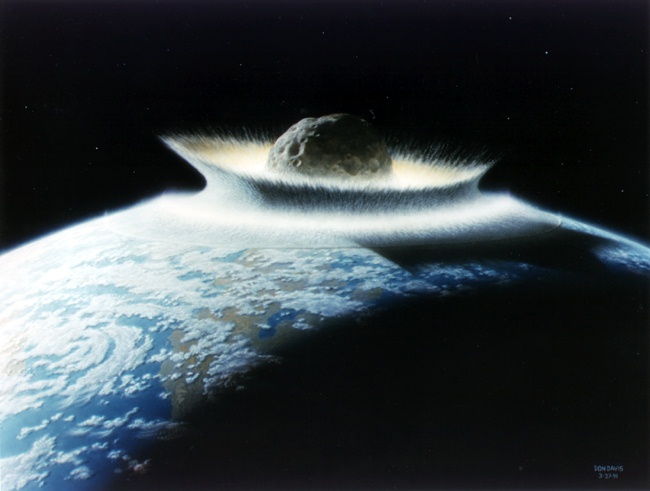 Earth Impacts
Earth Impacts
 Earth Impacts
Earth Impacts
| Material from space is constantly
hitting the Earth: meteors!
Most meteoroids are very small, pea-sized or less. When they hit the Earth's atmosphere, they burn up and we see them as meteors. Larger objects can also hit, but are rarer. We see them as fireballs, and they sometimes make it to the ground -- impact! |
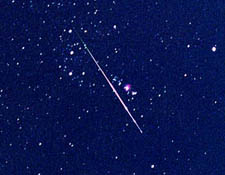 |
But what about something really big?
We see evidence that big things have hit in the past:
| Barringer
Crater
(Arizona, 1km, 50,000 years old): |
Wolfe Creek
(Australia, 1 km, 300,000 years old): |
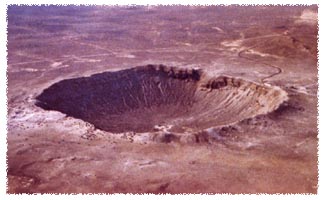 |
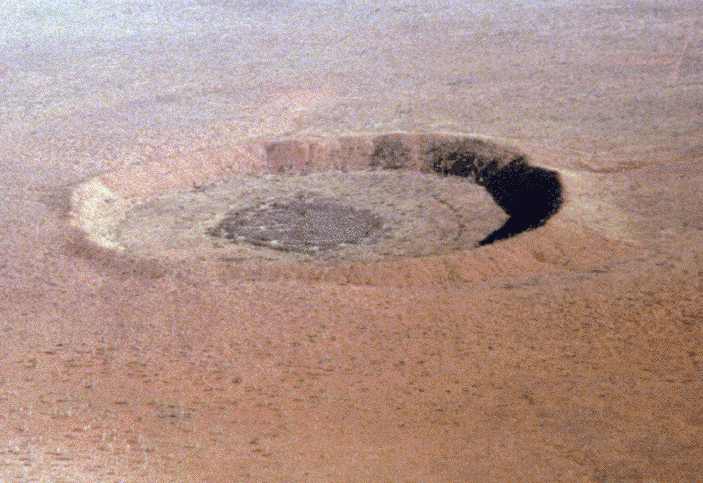 |
Manicouagan (Quebec, 100 km, 200 million years old):
How big is big?
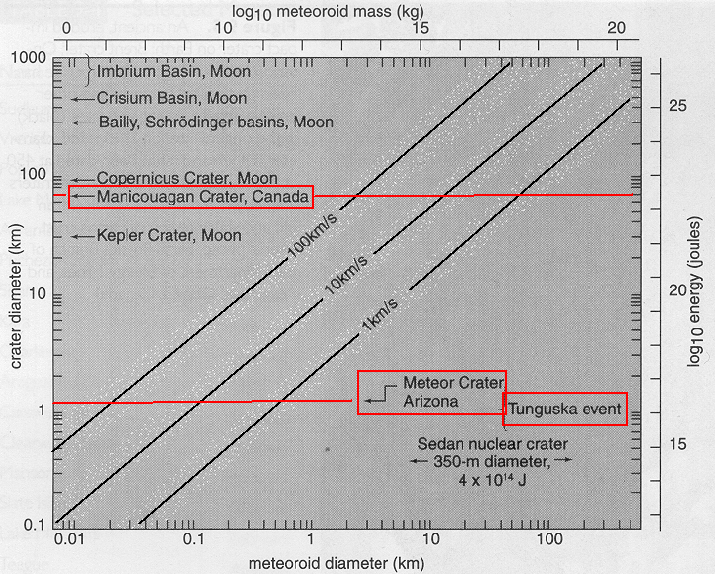
Examples(?)
- Tunguska, Siberia (1908) -- impact of a 30-60 meter stony meteorite, exploding before contact (no crater). Released 10-15 megatons of energy (ie an H-bomb).
A picture of the Tunguska impact site
- The K/T Event (or, The Dinosaur Killer)
The most recent mass extinction came between the Earth's Cretaceous and Tertiary Periods, about 65 million years ago. This included the dinosaurs. What happened to cause this mass extinction? Best current theory: impact!Luis Alvarez (1980) studied clay layers dating from the K/T boundary, and found anomolously high levels of iridium. Iridium is not common on Earth, but is found in meteorites. Iridium was also found throughout the earth, in layers which date to the K/T boundary.
Current thinking has a 10-km meteoroid impacting the Earth 65 million years ago, causing the climate changes that resulted in the mass extinction. A possible site (Chicxulub, pronounced "Cheek-shoe-lube") has been identified, in the Yucatan, buried under sedimentary rock.